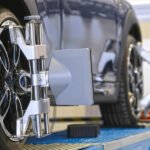

Are German Cars actually more expensive to maintain ?
It’s a common perception that German cars are more expensive to maintain than cars from other countries, and there’s some truth to that. In general, German cars are often associated with higher maintenance and repair costs compared to some other brands. Several factors contribute to this perception:
Complex Engineering
German cars often use premium materials and advanced technology, which means their parts can be more expensive than those for other cars. For example, a simple oil filter for a BMW might cost $20, while one for a Toyota might cost $5. it can also lead to more intricate and complex systems that may require specialized knowledge and tools for maintenance and repairs. However, it must be kept in mind that this use of advanced technology and premium materials enhances performance and driving experience, hence the cost is the trade off.
Exorbitant Mechanics
In many parts of Africa, there exists a prevalent perception within the automotive service industry that owners of German cars are inherently affluent. This perception often manifests in mechanics charging seemingly exorbitant rates for both routine maintenance and repairs, irrespective of the actual complexity of the task at hand. The assumption that German car owners can comfortably bear higher costs may lead to an unjustifiable inflation of service fees, creating an environment where the financial burden of owning a German vehicle extends beyond genuine expenses. While it’s true that German cars are often associated with luxury and precision engineering, it’s essential to recognize that not all owners fit the stereotypical image of opulence. This generalization can result in an unfair economic burden for German car owners, creating a need for a more nuanced approach in service pricing that considers the diversity of economic backgrounds among automotive enthusiasts in Africa.
Scarcity of spare Parts
In the African automotive landscape, the prevalence of Japanese cars significantly outweighs the presence of German counterparts, contributing to a notable scarcity of German car parts. This scarcity, coupled with a limited number of mechanics specializing in German vehicles, creates a scenario where the few available dealers and technicians may exploit the situation by overcharging for these parts. The imbalance in demand and supply, exacerbated by the dominance of Japanese cars, often leads to inflated prices for German car components. Importing spare parts becomes a less accessible option for many owners due to the unfamiliarity with bureaucratic processes such as tax clearance and government procedures. Consequently, this poses a substantial challenge for German car owners, making the maintenance and repair of their vehicles not only financially burdensome but also logistically intricate. Addressing this issue necessitates a more widespread availability of German car parts in the local market and an increased understanding among both dealers and car owners about the complexities surrounding importation processes. This way, the automotive landscape in Africa can become more inclusive, ensuring that the maintenance of German cars is both economically feasible and logistically viable for a broader spectrum of enthusiasts.
Conclusion
Indeed, the automotive landscape in Africa is undergoing a notable shift as the continent experiences a growing middle class. This socioeconomic development has spurred an increased interest in German car brands, known for their association with luxury, sophistication, and high performance. Despite the challenges related to spare parts availability and maintenance costs, the allure of driving a German-made vehicle has become a symbol of status and success. As individuals in Africa accumulate more disposable income, they are increasingly willing to make the trade-off between the higher costs of ownership and the unparalleled comfort and performance that German cars offer. The rising popularity of German makes reflects not only a shift in consumer preferences but also a desire for a driving experience that goes beyond mere transportation. This trend signifies a broader aspiration for a lifestyle that embraces luxury and cutting-edge automotive technology, highlighting the evolving automotive preferences of the growing middle class in Africa.
Add a comment Cancel reply
Categories
- Car Gadgets (17)
- Car News (33)
- Car Reviews (43)
- Car Wars (7)
- Mechanicals (32)
- Uncategorized (2)
Recent Posts
About us

Popular Tags
Related posts


Volkswagen Beetle: The Most Successful Car Ever

Kia Sorento 2022 Review








